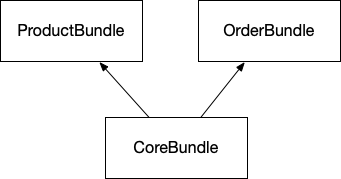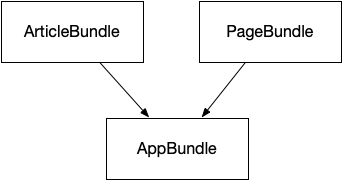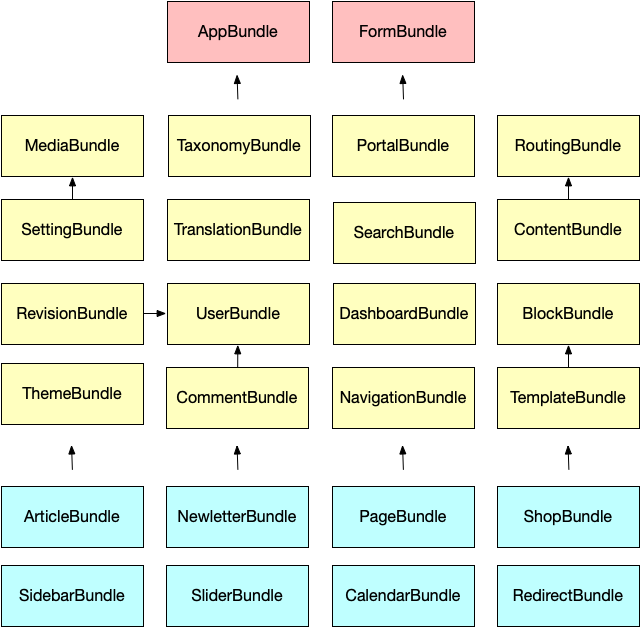Bundle Structure
Dependency philosophy
If you check the bundle structure of other symfony based systems like Sonata, Sulu or Sylius, you will recognize that there are two major approaches out there.

A common approach is to have one CoreBundle (The name can vary from system to system), which has dependencies to lot of other bundles. The big advantage is, because this CoreBundle knows everything, you can easily write code that combines the bundles. This will lead to a fat bundle which melts your code together, but also leave the other bundles small and therefore in most cases more reusable for other projects.

The other approach, which enhavo is using, is to have a Corebundle (We call it AppBundle) which has no dependencies to the other bundles of the system. Instead, the other bundles know the AppBundle and its functionality. The advantage here is, that you can decide, which bundle you will add to your project and which not. The structure is more flexible and modular, but on the other hand, bundles can't be reused in other projects than enhavo, because the implementation needs the base functionality of the AppBundle.
Layers
If we have a look at enhavo bundles' dependency graph, we see that the bundles can be divided into three categories or layers. The characteristic of a layer is that inside the layer there are less dependencies, while the dependencies between the layers are very frequent.
Core Layer:
The core layer provides core functionality to show the admin interface, and helpers to manage your models.
Functionality Layer:
The functionality layer provides useful functionality to address specific problems. In most cases they don't make sense to use on their own.
Domain Layer:
The Domain layer uses a lot of features from the functionality layer. Each bundle is a suggestion on how to address a specific common use case and provides special functionality for it.
Here you can see all the bundles divided into these layers
